Not Forgetting - Chapter 7: Farming Memories
A personal miscellany
Herbert Daybell
Introduction
My grandfather Herbert William Daybell, who I was named after, and great-grandfather, Daniel Richmond Daybell, both specialised in rearing the large white breed of pig, in which they were very successful, winning prizes at agricultural shows including Smithfield and the Royal Show. Our family were farming in Bottesford before the 1850s. We originally had Beckingthorpe Farm, but by 1891 we had moved to Canal Farm, Grantham Road (named Devon Farm in the picture).
Farming has changed a great deal since those days. Today there are far fewer family run farms, partly because of sons opting for different careers: I became a farming journalist. My memories are of farming from the 1950s onwards, but my father’s stories went back to pre-war days. Horses and steam power were commonplace up to the 1940s, but since then there has been a revolution in farm machinery and scientific methods. Dairying has largely died out in our area, replaced by larger scale arable farms. The squeeze on prices has forced us to be ever more efficient. Farmers have coped with pests and diseases, political changes and the challenges of the European Union.
Change in the 1940s and ‘50s.
The thumbnail sketch of farming in the vale was that wet, heavy land meant the main cropping area was grassland, as permanent pasture, which was utilised by dairy cows. Excess milk was made into cheese – hence the development locally of Stilton – and the cheese itself meant something was needed to use up the by-product of whey. Pigs were ideally suited to this task and my family was one of the commercial pig keepers in the village. Further evidence of this trade is the plethora of specialist Pork Butchers, especially still noticeable in Grantham and the development of the local delicacy the pork pie, to use up the cheap cuts of pork that these butchers couldn’t deal with as fresh sales in pre-refrigeration times.
Even in my childhood in the fifties, most of the small farmers in the village kept a few dairy or dual purpose cows, some of the rationale for this also grew out of wartime shortages when milk was a well regarded locally produced basic food. I can just remember friends coming to the house with cans to buy their milk in the days before a daily delivery was commonplace. Pint and half pint measures hung in the milk bucket in the back kitchen just for this purpose.
The bulk of the milk went in churns each day on a Baker’s of Aslockton lorry driven by Mr Turner and ended up in the dairy in Nottingham. In the pre-refrigeration days the milk came from the cows by hand milking at the cow’s body temperature and to cool it down in the churns, tap water ran through the milk in a tube, then trickled down the outside of the churns. This meant that the milk temperature was never below the temperature of the cold water supply, and once loaded onto the lorry the churns, in summer, were exposed to the heat of the sun’s rays for the rest of their journey. When there was a surplus and the milk went a bit iffy, it was hung in a piece of muslin to make a soft, easily spreadable cheese, sometimes called a Colwick cheese.
In contrast to this scene though the war time need for home produced food meant that much of the traditional Leicestershire pastures went under the plough for the first time between 1939 and 1945 to generate arable cropping for the war effort. The newly ploughed out land was fertile and produced good crops of wheat in the first years and subsequently the more formal rotations were needed to maintain this fertility, with the classic Norfolk four course rotation of roots, barley, seeds, and wheat being commonly used.
After several years of ploughing the traditional rig and furrow landscape began to disappear and government grants encouraged drainage systems to be put in, which hadn’t been necessary under the permanent pasture regime. This, in turn, changed what had been the natural flora of the region as plants that had thrived under grass without drainage gave way to the more arable range of weeds.
But dairying for the small farmer also had another big advantage; a regular monthly cheque from the dairy for milk sales, and that in turn provided a regular income for farming families.
Many village families also had a pig sty in the garden and bought suckler pigs from local farmers and fattened them up with household scraps ready to be killed in the autumn to see the family through the winter.
The introduction of hygiene regulations meant that families gradually gave up this small scale pig keeping and pig production relied more on bought in rations, with economies of scale for those who bought in larger quantities. This led to larger scale production taking over from the smaller farms. Gradually dairy herds also disappeared as the more stringent hygiene regulations and the hazards of walking cows to grass fields and back outside the village twice a day on the pre-bypass Bottesford A52 became a nightmare.
Crop rotations didn’t change much over the years and root crops of potatoes or sugar beet didn’t make big inroads into the village because the land wasn’t suitable. The major change in recent years had been the introduction of oilseed rape (and briefly linseed, though the removal of subsidies effectively killed this crop off). Oilseed rape was, initially at least, a heavily subsidised EU crop introduction and it fitted in well on the heavy local soils, and gave a useful break crop to get farms back into winter wheat – a consistently reliable crop on local soils. Being a combinable crop it also meant that no new machinery was required to deal with it.
The increasing importance of arable cropping, larger tractors and equipment, as well as the reduction in farm animals – and the need for them to be fed every day – has meant that the traditional farm worker has all but disappeared in the village.
Harvest time
Harvest time has always seen the village farmers at their busiest. My memory of this time is of the binders being pulled by early tractors circling the cereal fields to harvest the crops. It was a labour intensive operation. A tractor driver was needed, and a man to sit on the binder and operate the control for the sails and bed, and to keep an eye on the always temperamental tying system that wrapped the string around each sheaf as it was jettisoned out of the side of the machine. Just as important as this was the team following behind and collecting the sheaves and setting them up in stooks, so as to keep them reasonably protected from the rain until such time as they could be collected in and stacked for the winter.
In those pre-weedkiller days there was a colourful range of wild flowers amidst the corn, and to the distress of those collecting up the sheaves, thistles were ever present and embedded themselves in the arms of those collecting up the sheaves for stooking. Women and children went around the hedgerows gathering up (gleaning) any missed bits of the crop to be fed to the hens.
It was a tiring day’s work and often involved several farmers working together to get the job done before the winter set in. Old men, long past their retirement date, were roped in to earn a bit of extra beer money, and they often brought bottles of cold tea to quench their thirsts in the harvest fields.
Getting the corn in was obviously the priority at this time of year, and any breakdowns caused much swearing. The belts on the binder were notoriously fickle and the buckle fastenings tore off when any great stress was put on them by a blockage. There was usually a spare set of these so that they could be replaced when this happened and the job could continue as quickly as possible. Several times as a child I was despatched on the Barton’s bus to Redmile to Mr Wilson the saddler to arrange some repair or other to the belts. The message was always the same, and was one I felt very nervous about delivering. “Tell him you’re waiting until the job’s done – then come straight back here”.
A more popular errand was to walk across the fields to Spreckley’s mill on the canal at Belvoir road and buy a bottle of pop to quench our thirsts. The Spreckleys kept a case or two of pop at their house to sell to fishermen when they visited the canal. It was always a temptation to open the pop on the way back. This had to be set against the rebukes of the others in the field on knowing what had happened when I arrived with a less than full bottle!
The annual church Harvest Festival, really meant something when the village still had a community of families involved in food production, and to know that all really was “safely gathered in” was a relief and something to be truly thankful for. Harvest festival services saw Saint Mary’s at its fullest and most grateful. After the service there was also the squabble between Canon Blackmore and Tommy Robinson to see who would claim the sheaves of corn that had decorated the church, since both kept hens and wanted the sheaves for their winter feed.
Technological changes
I don’t remember the days when horses were used to pull the binder, but I remember my father saying that he always thought this one of the cruellest things he ever saw. When the horses were unshackled from the binder after a full days work and taken to their field for the night he said that he remembered that they just dropped to the ground exhausted and were even too tired to slake their thirsts at the water trough, despite having worked all day.
Over time, binders were replaced by combines. At first these were tractor drawn, then, later, self propelled. The early self propelled Massey Harris machines were belt driven and to engage the cutting and threshing mechanism a lever pushed a jockey wheel against the main drive belt so that it eventually took the power from the engine and put all the machine in motion. The belts squealed in protest and the engine groaned as all power was needed to get the mechanisms moving from static. Once everything was in motion the momentum helped keep things going and the engine could cope more easily.
Early combines needed a driver and a man to bag the thrashed corn as the combine drove along. These bags were then either let down a shoot to the ground for later collection, or held on a platform, then transferred to a trailer. The combines left the straw in the field, whereas threshing machines left the straw all in one place, so together with combines the trailed baler was developed. Some of the earlier ones had their own engine, but most took their power from the tractor towing them.
Sacks for this time of year were hired from the station and were simply called railway sacks, these were the largest on the market and way, way beyond any modern-day safety regulations (20 stones of beans, 18 stones of wheat or 16 stones of barley to a sack!). The railway companies later sold out the sack franchise to a company called Chisholm, Fox and Garner and theirs were usually 12 stone sacks. The sacks from Lees of Grantham were smaller and more user friendly. Eventually more modern combines handled the grain in bulk, so it became a one man job and bigger, more sophisticated machines speeded up the operation still further.
With combining, the grain was immediately in a readily saleable form, but in the earlier bindering system, the sheaves had to be collected from the field, stacked and then thrashed at some later date before they could be sold. This stretched farmers’ cash flow, so the combine was popular because it brought earlier payments for many farmers.
With the binder, a threshing machine was needed to thresh out the grain from the stacks. This was invariably a contractor’s job in Bottesford. The nearest one was Alf Ablewhite of Normanton. His set up was powered by a Marshall tractor that had a big flywheel from which a flat belt drove the threshing machine itself. Sheaves were fed into the top of the drum from the stack and the corn was bagged off, straw baled and chaff blown into a heap. As the stack reduced in size, the sheaves had to be manhandled on forks up into the drum, so, as the job went on, the work became increasingly harder for those on the stack.
Also, at the same time, the rats and mice which had been enjoying a food packed winter were driven downwards into the ever reducing stack. Eventually they broke cover and dogs and children with sticks took their revenge on the freeloading vermin as they sought to escape. Many men tied string around their trousers at the ankles to stop the rats clambering inside in the panic.
Oats and beans were often grown on village farms because together they made a more or less balanced ration for livestock in the winter when grassland was unavailable. Hay was the main source of roughage for ruminants up until the 1960s when silage began to take its place on the larger farms, though hay was, and still is, made here.
Gerry Firth at Eady’s Farm down Barkestone Lane had the most modern system of its time with a haylage tower that stored higher dry matter silage and fed it out mechanically to his dairy herd. A second tower held high moisture barley for feeding to the dairy cows. Both structures had a short lifetime.
Regulation
The farming year after harvest has changed little over time, but there has been a gradual change to larger, more mechanised farms with all dairy farms disappearing and few farms left in the centre of the village. The two most central farms both saw their buildings converted to houses as the trend and demand for barn conversions became popular in the 2000s.
Early in the 1990’s a new concept appeared – set-aside. This came in under EEC directives, and the idea was to put a percentage of arable land out of production to reduce the so called `grain mountain’, that had developed because the EU subsidies had encouraged production way above the level of demand. Farmers were paid in effect not to grow anything. This later developed into a stewardship approach.
Government and latterly EU policy decisions have had an influence on farming practice and there is now little evidence of farms catering for local markets. Along with the disappearance of what we thought of at the time as traditional farming, the ancillary trades have also disappeared.
I can just remember taking sacks of barley from the farm to be ground at Mr (Jockey) Baines’ mill at Easthorpe and he had a steady supply of barley sugar twists for children which he kept unwrapped in his pocket.
In the fifties there was a regular stream of representatives – or reps – calling on farms to solicit orders for the farmers’ purchases. These companies included Maules of Orston, which had a local mill and distribution system, Levers with their warehouse at Bottesford sidings, Bells, Hunter and Moys in Grantham and Melton Farmers, the local farmers co-op in Melton (which later became Midlands farmers, before going out of business altogether). All these had reps on the road. Some time later Gerry Firth also traded as Loveridge and Firth and bought grain from local farms. Where sheep were kept the wool went to Central Wool Growers at Stamford and they grew to become involved in a range of supplies for farmers and have recently reinvented themselves by specialising in the needs of the local horse market.
Livestock were bought and sold at the weekly markets at Melton (Tuesday) Newark (Wednesday) and Grantham (Thursday).

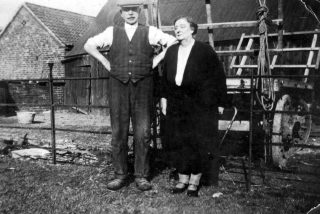
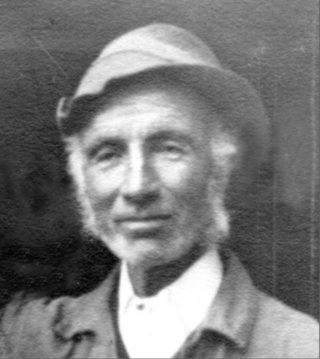
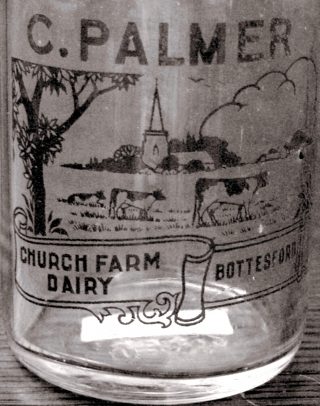
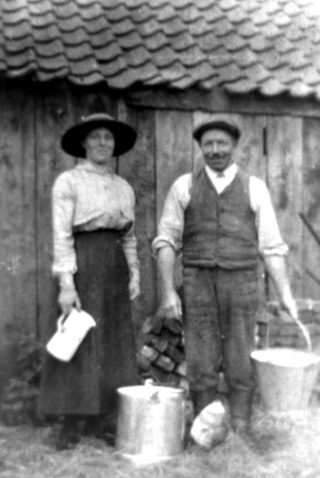
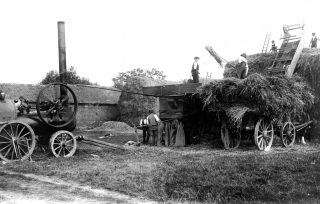
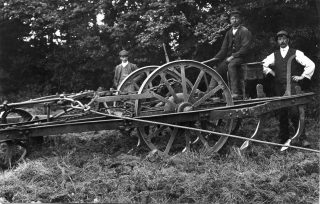
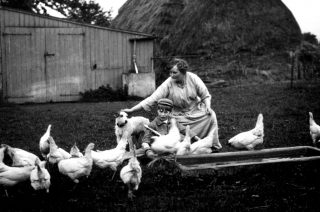
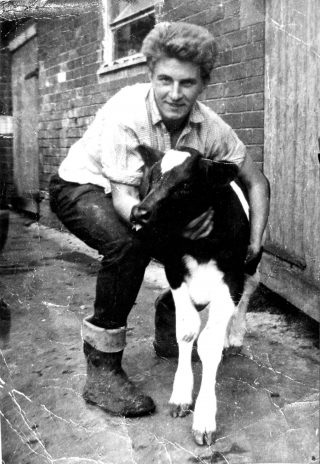
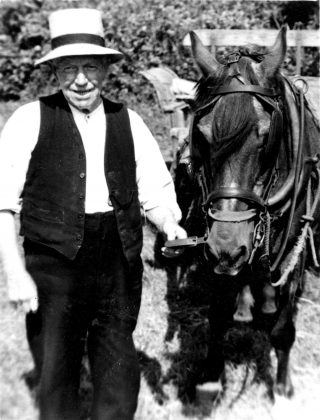
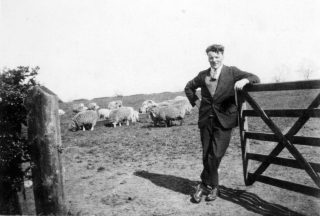
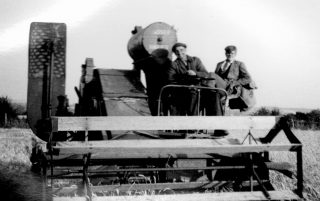
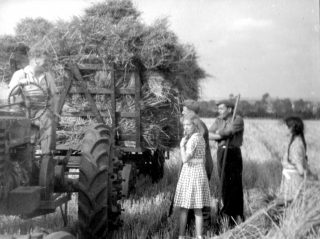
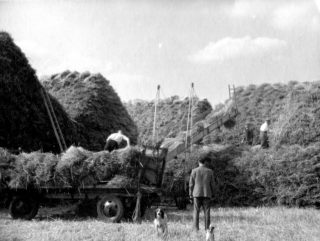
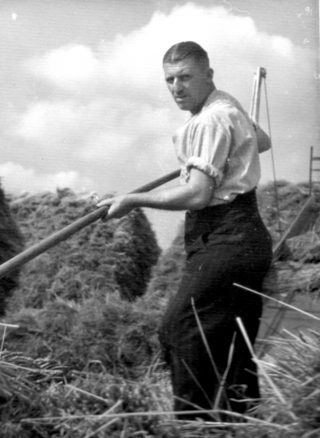
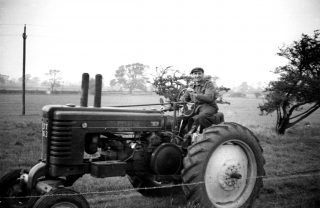
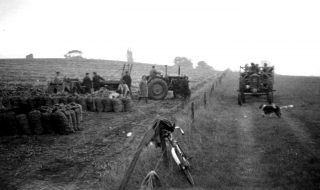
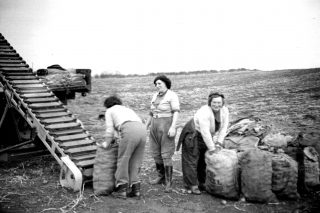
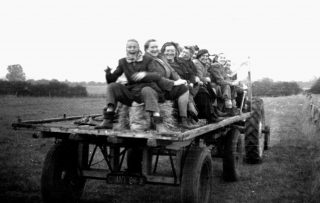
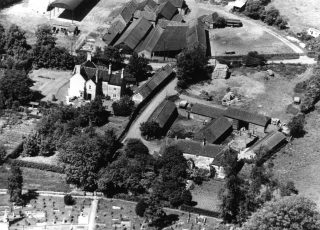
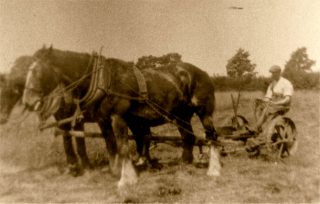
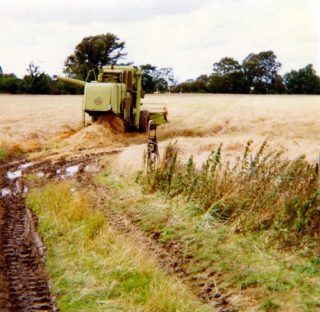
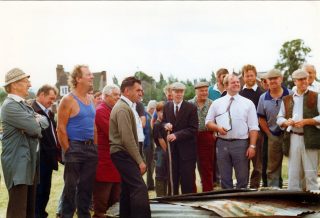








No Comments
Add a comment about this page